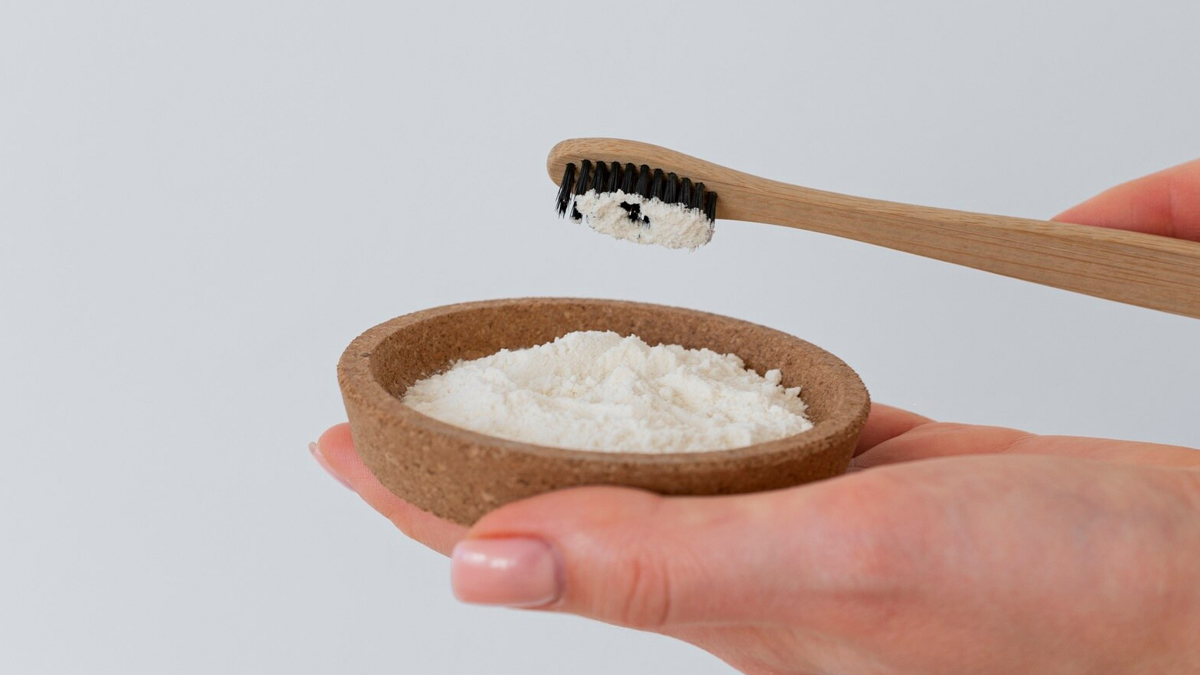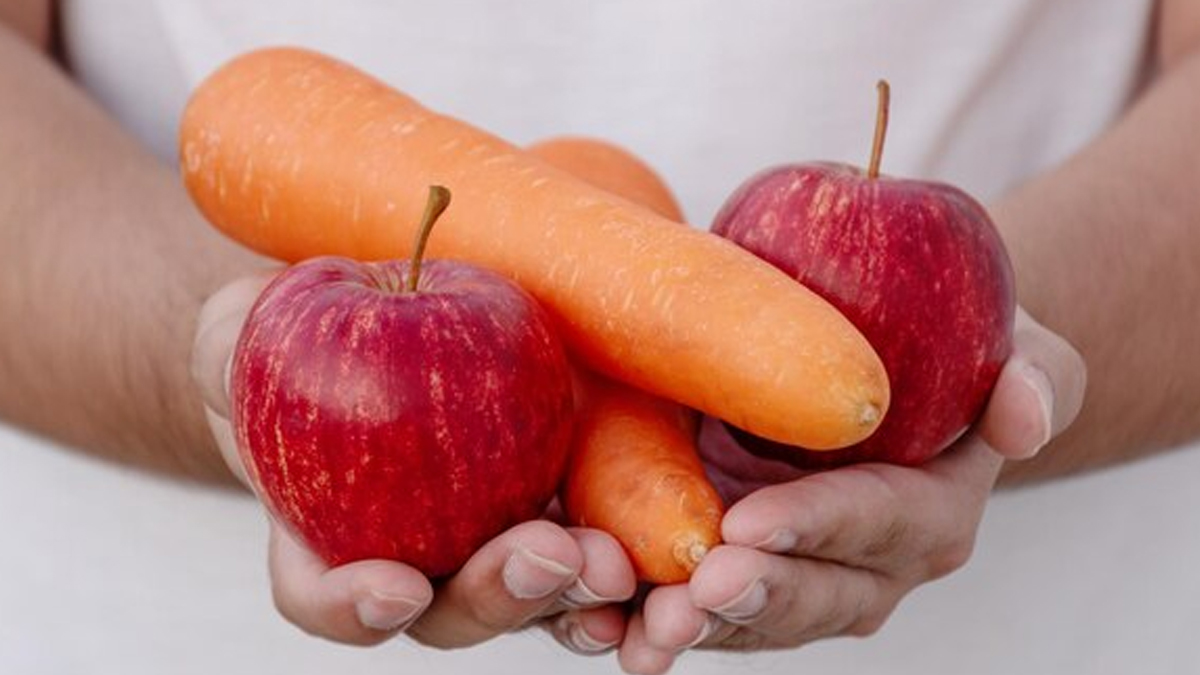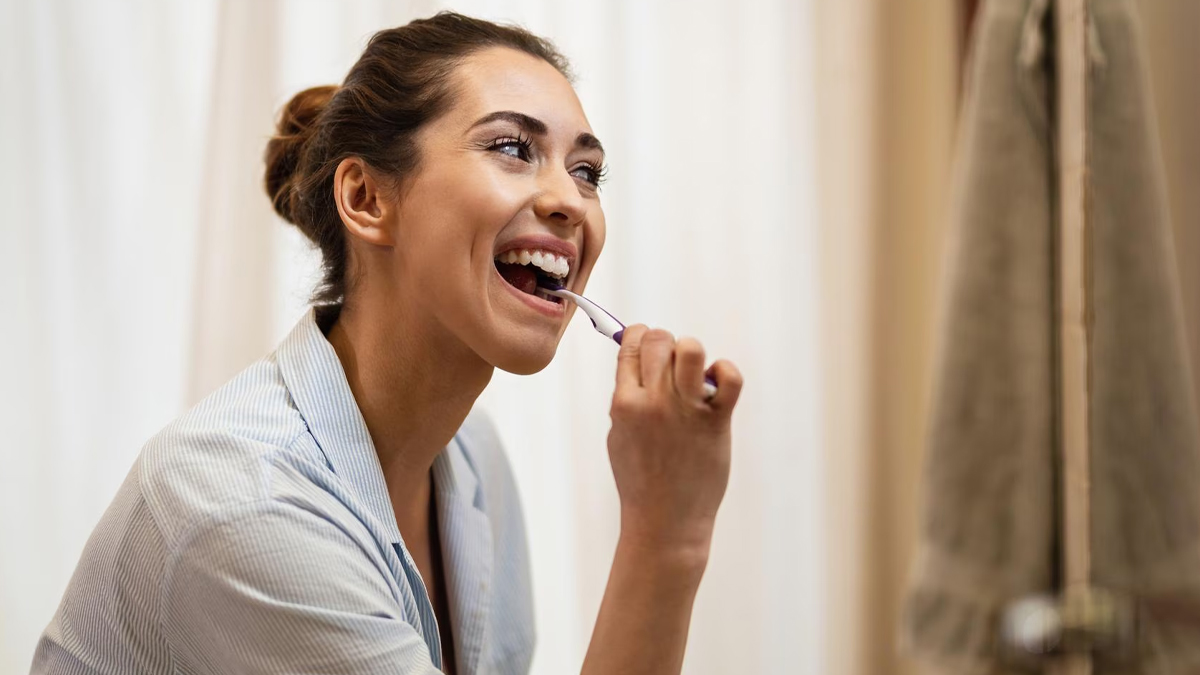
Most DIY whitening tricks offer rapid results, but harsh ingredients or rough methods may result in enamel loss, increased sensitivity, and permanent damage. Fortunately, various mild, natural solutions deliver subtle, risk-free whitening without any harm to the teeth and oral health, especially when backed by dental research.
Table of Content:-
Safe and Natural Whitening Methods
1. Baking Soda (Sodium Bicarbonate)

- How it helps: Baking soda is a gentle abrasive, which eliminates surface stains and neutralises plaque acids. It has acid-buffering and antibacterial properties, too
- Evidence: In a 2017 study, baking soda dentifrices removed stains well and were safer than more abrasive options.
- Tips: Use it sparingly, just 2–3 times a week, with a soft-bristled toothbrush and gentle brushing. Always follow up with fluoride toothpaste to protect enamel.
2. Oil Pulling
- Method: Swish coconut (or alternative) oil around your mouth for 10–20 minutes, then spit out.
- Why it helps: It dissolves bacteria and plaque on teeth, lightening your smile without bleach or chemicals. In a randomised controlled trial, coconut oil pulling reduced plaque by a significant amount in 7 days compared to a placebo.
3. Crunchy Fruits and Vegetables

- Function: Apples, carrots, and celery behave like natural toothbrushes, gently scrubbing away surface stains.
- Nutrition boost: These foods also promote saliva flow, which helps maintain enamel and rinse staining agents.
4. Natural Enzyme-Rich Fruits
- Pineapple: It contains bromelain, which is a natural enzyme that may reduce staining and inflammation.
- Strawberries: It contain malic acid that can help fade surface stains, but always use cautiously due to their acidity.
5. Xylitol-Infused Gum
- How it works: Xylitol is a sugar substitute that repels harmful bacteria and supplements saliva, aiding enamel remineralisation.
- Evidence: A randomised controlled trial found that xylitol gum reduced plaque accumulation and enhanced remineralisation potential.
What to Avoid for Healthy Whitening
- Acidic ingredients: Lemon juice, vinegar, and fruit peels will whiten but quickly erode enamel.
- Activated charcoal: While trendy, it's abrasive and may damage enamel long-term.
- Overuse of baking soda: Though mild, excessive brushing can wear away enamel, leading to sensitivity.
Smart Whitening Habit Tips

- After consuming staining foods or drinks (like coffee or red wine), rinse your mouth or drink water to reduce enamel damage.
- Always follow acidic exposures, like fruits with brushing using fluoride toothpaste to help enamel recovery.
- Keep up with twice-daily brushing and daily flossing to minimise stain buildup.
- Don't replace natural practices with routine dental check-ups and cleanings.
Sample Daily Routine for Safe Whitening
- Morning: Brush with fluoride toothpaste. Rinse with water after acid meals.
- Midday break: Chewing xylitol gum after meals will add saliva and neutralise acids.
- Evening snack: Eat crunchy veggies or fruits to naturally scrub away stains.
- Night brushing: Use a baking soda paste (1–2 times a week) gently.
- Weekly tweak: Oil pull once or twice a week for additional plaque control.
Bottomline
Achieving a naturally brighter smile is possible and safer, without harsh chemicals or damaging abrasives. Baking soda (used wisely), oil pulling, crunchy produce, enzyme-rich fruits, and xylitol gum all work together to keep your teeth clean, vibrant, and enamel-healthy. Don't skip your dentist appointments, and follow gentle routines and stay consistent.
[Disclaimer: This article contains information for informational purposes only. Hence, we advise you to consult your professional if you are dealing with any health issue to avoid complications.]
Also watch this video
How we keep this article up to date:
We work with experts and keep a close eye on the latest in health and wellness. Whenever there is a new research or helpful information, we update our articles with accurate and useful advice.
Current Version
